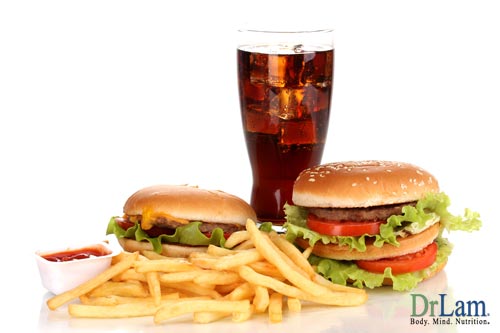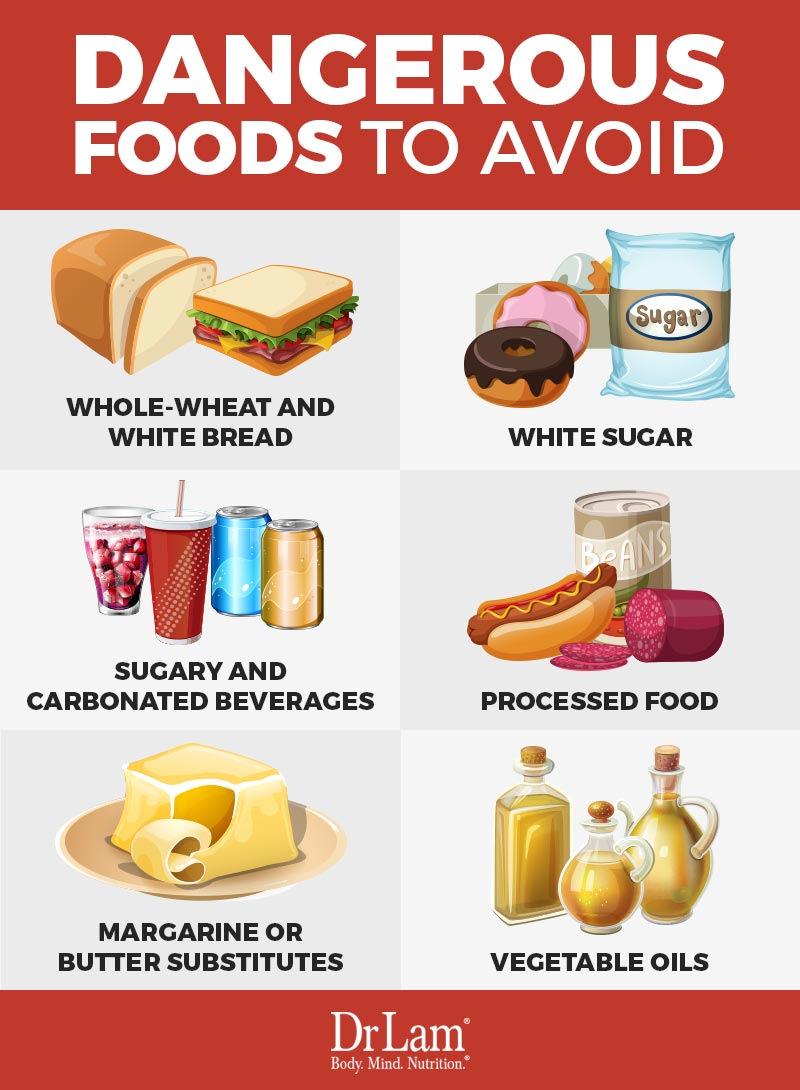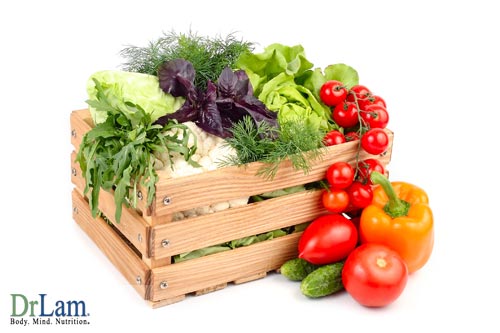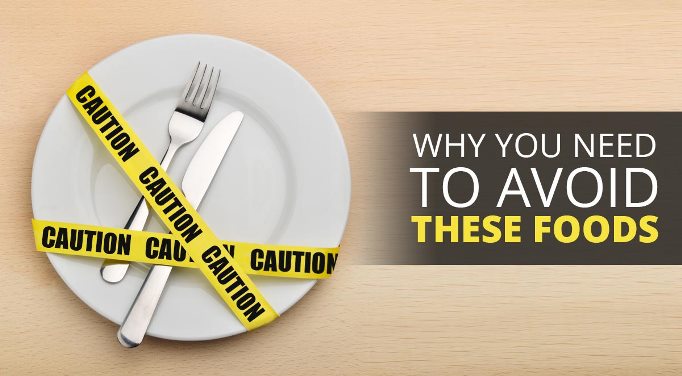 Our earliest ancestors thrived on a raw food diet. As time went by, they discovered fire and started cooking their food. It was not until fairly recently that we have started processing our foods, jumping onto diet bandwagons, going for takeout, or buying foods labeled as ‘healthy’, ‘fat-free’, ‘sugar-free’, and so on for our families. Increasingly, we are warned of dangerous foods, yet we carry on living our lives oblivious to what this means, or why.
Our earliest ancestors thrived on a raw food diet. As time went by, they discovered fire and started cooking their food. It was not until fairly recently that we have started processing our foods, jumping onto diet bandwagons, going for takeout, or buying foods labeled as ‘healthy’, ‘fat-free’, ‘sugar-free’, and so on for our families. Increasingly, we are warned of dangerous foods, yet we carry on living our lives oblivious to what this means, or why.
Interestingly enough, we are also a society with a higher percentage of deaths due to heart failure, the occurrence of diabetes, and myriad other health problems than has ever been encountered before. The reason behind this escalation in health problems is found in our modern lifestyle and our modern diet.
Junk food, fast foods, and processed food have become dangerous foods. People put on the weight, they are diagnosed with all kinds of illnesses, cancer included, yet fail to see the link between how we live, what we eat, and what we see happening to our bodies. We believe ‘it won’t happen to me’, and yet it does. Nobody is exempt.
Many of these foods contain manufactured ingredients that are not compatible with our bodies. This results in a toxic build-up that is debilitating. Yet we are constantly bombarded by the media that tells us how good it is for us. Many nutritionists try to warn people by telling them that these are not real foods. Seemingly, people do not understand how something good for you would be deemed by a few to be dangerous to eat.
Just what do these foods do to our body, and more importantly, why?
Foods that endanger our health are everywhere: in our grocery cupboard, at the grocery store, and in restaurants. Many are touted as being ‘healthy’ and ‘good’ for you. They have additives, are fat-free, and sugar-free and great for you, right? Wrong! There are many ‘good’ foods that are, in fact, dangerous to our health, and we will look at a few of them.
White flour, used to make white bread, acts on our bodies much the same way as white sugar and puts stress on the pancreas, eventually disrupting our insulin levels. The result is that our body starts storing fat.
White flour has, essentially, been stripped of much of its nutritional value during the refinement process. It is low in fiber and essential vitamins and minerals and has a high glycemic index. This acts negatively on the blood sugar and insulin levels. Some of the results of a diet high in white flour are heart disease, type 2 diabetes, and weight gain.
 Whole wheat is undeniably healthier than refined white wheat, but still considered dangerous foods. A large percentage of people are sensitive to gluten in their diet, and wheat, unfortunately, is the main source. Gluten can damage the digestive tract’s lining, cause pain, inconsistent stools, tiredness, and bloating, which cause internal stress for the adrenal glands. Gluten also affects the thyroid glands in the long run. Another component of wheat - fiber - is proven to cause Vitamin D deficiency. Wheat also increases LDL (bad) cholesterol.
Whole wheat is undeniably healthier than refined white wheat, but still considered dangerous foods. A large percentage of people are sensitive to gluten in their diet, and wheat, unfortunately, is the main source. Gluten can damage the digestive tract’s lining, cause pain, inconsistent stools, tiredness, and bloating, which cause internal stress for the adrenal glands. Gluten also affects the thyroid glands in the long run. Another component of wheat - fiber - is proven to cause Vitamin D deficiency. Wheat also increases LDL (bad) cholesterol.
Consuming large amounts of wheat could thus endanger your health.
Foods with high sugar content have long been known as dangerous foods. Our bodies are designed to run on carbohydrates, our primary energy source. This fuel is derived via the complex carbohydrates we find in vegetables, legumes, whole grains, and fruits.
Man, with his technology, has found ways to extract the sweetness from our food, while discarding the actual nutrient sources. Refined sugar, as a food source, is lethal, as it is entirely depleted of its nutritional value. Concentrated sugar, in any form, causes a rapid increase in blood sugar levels. If it cannot be used as fuel, it is stored in the form of fat. A rise in blood sugar causes a rise in insulin secreted by the pancreas. A constant rise in insulin causes a sudden fall in blood glucose levels, causing hunger pangs. If another high glycemic meal is eaten, a cycle begins with constant spikes in insulin levels. Eventually, this leads to insulin resistance, and the blood glucose levels remain high with the pancreas trying to produce ever-higher amounts of insulin.
The result is long-term damage to cells and organs, resulting in conditions such as obesity, insomnia, high blood pressure, type 2 diabetes, heart problems, and Adrenal Fatigue Syndrome (AFS).
Fruit juice, diet soda, and sports drinks are all said to be good for you. They are not. These ‘foods’ are actually quite harmful to your health, probably as harmful as regular soda.
Fruit juices off the supermarket shelf seldom contain much real fruit. They are, more often than not, water with artificial flavoring and sugar. Even 100% real fruit juice are not as healthy as they sound. Once the fruit is processed, all the goodness is removed leaving sugar and a few vitamins behind. The sugar count for a glass of orange juice is the same as for a glass of Coca-Cola.
Sports drinks are great for the athletes they are made for. They contain water, electrolytes, and sugar, to replenish lost fluids, replace electrolytes, and provide energy respectively.
The sugar and electrolytes are wasted on someone who is not working up a sweat, and the majority of people consume too much sugar in any case.
 Sodas, as well as diet sodas, for that matter, put people at a greater risk of developing type 2 diabetes. Both these types of sodas are linked to obesity, certain types of cancer, and kidney damage. They contain no nutrients and add chemicals and sugar to your body that deplete it of its nutrients. The acid they help create in the body not only depletes you of your mineral stores but also weakens your bones. Diet soda also tricks your body into believing it is sugar, thereby prompting more sugar cravings while affecting your metabolism negatively.
Sodas, as well as diet sodas, for that matter, put people at a greater risk of developing type 2 diabetes. Both these types of sodas are linked to obesity, certain types of cancer, and kidney damage. They contain no nutrients and add chemicals and sugar to your body that deplete it of its nutrients. The acid they help create in the body not only depletes you of your mineral stores but also weakens your bones. Diet soda also tricks your body into believing it is sugar, thereby prompting more sugar cravings while affecting your metabolism negatively.
Many of the sweeteners used in diet sodas are dangerous. Aspartame, for example, is associated with diabetes, vision problems, memory loss, heart palpitations, brain damage, and certain emotional problems.
Processed foods are dangerous foods, in any size, shape, or form, are harmful to your health. Canned soup, often seen as a healthy choice, contains almost an entire day’s salt allowance in one meal. The excessive salt puts stress on your entire body, specifically the heart, resulting in high blood pressure and an increased risk of having a heart attack.
Processed meats, including hot dogs, bacon, and salami, can have 50 percent more preservatives and a whopping 400 percent more sodium than regular, unprocessed meat. Additionally, many of these dangerous foods contain compounds for flavor and color enhancement called nitrates that are linked to certain forms of cancer.
Loaded with trans fats, margarine is one of the most dangerous foods around. The body is not able to process these trans fats. Not only do they raise cholesterol, they also damage blood vessel walls. All food that is not natural causes a toxic burden that puts an inordinate amount of stress on the liver. Additionally, trans fats lower HDL (good) cholesterol levels.
Polyunsaturated oils, of themselves, such as corn or canola have beneficial qualities. The problem, however, arises when these foods are refined for cooking oil, essentially rendering them toxic.
This is because the refinement process allows these oils to oxidize while being exposed to heat, thereby forming trans fats. The exceptions, however, are coconut oil and grapeseed oil. They do not turn toxic when cooking. Olive oil is fine for cooking at lower temperatures.

When eating dangerous foods filled with toxins, an inordinate amount of stress is put on the liver to detoxify the body. This stress, in turn, is handled by the adrenal glands, the body’s first port of call in any given stressful situation.
 The adrenal glands’ response to stress is the production of cortisol. When the body’s hypothalamic-pituitary-adrenal (HPA) hormonal axis works properly, the body is quite capable of handling stressful situations without any real side effects. However, if the stressful situation persists, for example due to a constant influx of toxins as a result of consuming food that is deemed dangerous to the body, the adrenal glands become overburdened and the output of cortisol becomes dysregulated. In effect, the adrenals go into a state of stress and produce larger quantities of this anti-stress hormone. Following this, the adrenals can no longer keep up with the demand at some stage, leading to what is commonly known as adrenal fatigue or adrenal exhaustion.
The adrenal glands’ response to stress is the production of cortisol. When the body’s hypothalamic-pituitary-adrenal (HPA) hormonal axis works properly, the body is quite capable of handling stressful situations without any real side effects. However, if the stressful situation persists, for example due to a constant influx of toxins as a result of consuming food that is deemed dangerous to the body, the adrenal glands become overburdened and the output of cortisol becomes dysregulated. In effect, the adrenals go into a state of stress and produce larger quantities of this anti-stress hormone. Following this, the adrenals can no longer keep up with the demand at some stage, leading to what is commonly known as adrenal fatigue or adrenal exhaustion.
Once adrenal fatigue reaches an advanced stage (typically stage three or stage four), new symptoms start presenting themselves, which include panic attacks, food sensitivities, hypersensitivity to certain medications, heart palpitations, brain fog, and depression. Not all these symptoms, however, are attributed to a dysfunctional HPA axis. This is the NeuroEndoMetabolic (NEM) stress response, which is how your body deals with stress as a whole. Many systems and organs are involved in this process, and as a result, many different symptoms can arise when the system goes awry.
Practitioners of natural medicine investigate the underlying cause of the body’s stress response using a system-oriented approach.
Symptoms are seen as an expression of the underlying pathology and are traced back to the cause. Imbalances can arise because of various influences, such as eating unhealthy food, our nutritional intake, genetic factors, and lifestyle. In other words, the symptoms are not merely addressed, but the reason behind the symptom itself. It is, therefore, an approach that takes all parts of the whole into account. This means it takes into consideration the interaction between all the body’s systems, e.g. gastrointestinal tract, endocrine system, and immune system. It examines how they all interact, and the impact they have concerning stress response. When the process that caused the symptoms is understood, the healing process becomes more comprehensive, and a holistic method of recovery can be undertaken.
The entire NEM stress response could thus be seen as a web that consists of various parts that are all linked together in order to form a functional network with the sole job of handling any stress that threatens our continued survival.
Besides cutting out the harmful foods that contribute to adrenal exhaustion, possible dietary supplementation and nutritional coaching may be advised by someone who practices homeopathy. An adrenal fatigue diet specifically designed to address the problem should also be followed.
Such a diet is designed to keep energy levels on a constant keel in order to put as little stress on the body as possible. This would include eating smaller meals and snacks throughout the day. The proper nutrition is imperative in cases such as these. Meals and snacks should be balanced and combine proteins, fats, and grains as well as a variety of different, brightly colored vegetables throughout the day.
 Protein sources, e.g. eggs, poultry, fish, red meat, and dairy that are free of hormones and antibiotics, serve to provide the body with the necessary fat and protein it needs to function properly. A variety of colored vegetables supply the body with the necessary vitamins, antioxidants, phytochemicals, and minerals it needs. Easily digestible soups and broths are great for a weakened system.
Protein sources, e.g. eggs, poultry, fish, red meat, and dairy that are free of hormones and antibiotics, serve to provide the body with the necessary fat and protein it needs to function properly. A variety of colored vegetables supply the body with the necessary vitamins, antioxidants, phytochemicals, and minerals it needs. Easily digestible soups and broths are great for a weakened system.
Certain fruits - such as banana, dried figs, dates, oranges, raisins, and melons should be avoided however. They are high in potassium, which has a negative effect on already taxed adrenal glands. In general, fruit should not be more than three servings daily.
Fluid intake also plays a role in recovery from adrenal fatigue, as many who have the condition also suffer from dehydration. However, your fluid intake should not contain sugar, caffeine, alcohol, or any ingredient that could cause congestion in the liver.
© Copyright 2017 Michael Lam, M.D. All Rights Reserved.

